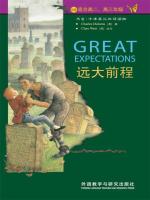2
用户737403
Great Expectations is one of Charles Dickens' most famous and celebrated
novels, first published in 1860-1861. The novel is a rich, intricate
story of personal growth, ambition, and social class, woven together
with elements of mystery, suspense, and vivid characterizations. It's
often seen as Dickens' literary masterpiece, with its compelling plot
and deep psychological insight into the human condition. Below are key
aspects of the novel that contribute to its lasting reputation: 1. Plot
and Structure Great Expectations follows the life of Philip Pirrip,
better known as Pip, a poor orphan boy raised by his sister and her
husband. Over the course of the novel, Pip experiences a dramatic rise
and fall in his social status, beginning as a humble boy in rural
England and later becoming a gentleman in London, all the while chasing
the illusion of "great expectations" that seem to promise
happiness and fulfillment. The plot is divided into three stages of
Pip's life, beginning with his childhood, transitioning into his youth,
and ending with his adulthood. Dickens uses suspense and mystery in the
form of characters like the convict Magwitch, the enigmatic Miss
Havisham, and the beautiful but cold Estella to drive the narrative.
The novel is structured around Pip’s evolving sense of identity and the
shifting nature of his desires. At its core, Great Expectations is about
the loss and eventual rediscovery of self. The story explores themes of
ambition, self-deception, love, and regret. Dickens' decision to
initially publish the novel in serialized form allowed him to build
suspense and keep readers on edge as they anticipated the next chapter.
2. Themes of Class, Social Mobility, and Identity One of the central
themes of Great Expectations is the critique of social class and the
notion of upward mobility. Pip's desire to become a gentleman is
motivated by his love for Estella and his belief that social status and
wealth will bring him happiness and self-worth. However, as the story
progresses, Dickens reveals the inherent flaws in this pursuit. Pip’s
obsession with becoming a "gentleman" leads him to alienate
those who truly care about him, such as Joe, his kind-hearted
brother-in-law, and Biddy, his childhood friend. The novel explores the
tension between social class and personal identity, asking the question:
Does social elevation truly lead to happiness? Or does it create new
struggles, leaving people more disconnected from their roots and more
dissatisfied? Through Pip’s transformation, Dickens critiques the
Victorian obsession with social status and material success, while also
highlighting the nobility of those in lower classes—such as Joe, who
embodies virtue and integrity despite his humble position. 3. Characters
and Psychological Depth Dickens is known for creating memorable,
larger-than-life characters, and Great Expectations is no exception.
Each character plays a significant role in shaping Pip’s journey and
personal growth, often symbolizing different aspects of society or human
nature. Pip: As the protagonist, Pip undergoes profound emotional
and psychological changes throughout the novel. His transition from a
naive, innocent boy to a self-absorbed young man and eventually to a
wiser, more self-aware adult forms the crux of the narrative. His
internal struggles with guilt, shame, and his longing for a higher
social status make him one of Dickens' most complex characters.
Estella: Estella, the beautiful but emotionally distant woman whom Pip
loves, represents the unattainable ideal and the destructive power of
class-based aspirations. Raised by Miss Havisham to break men’s hearts,
Estella is both a victim of her upbringing and a symbol of Pip’s
misguided obsession. Miss Havisham: A deeply eccentric and tragic
figure, Miss Havisham is a wealthy woman who has frozen her life at the
moment of her jilting. Her decaying mansion, her wedding dress, and her
obsession with revenge on men encapsulate the novel’s themes of
stagnation, vengeance, and the ravages of time.



 京公网安备 11010802032529号
京公网安备 11010802032529号